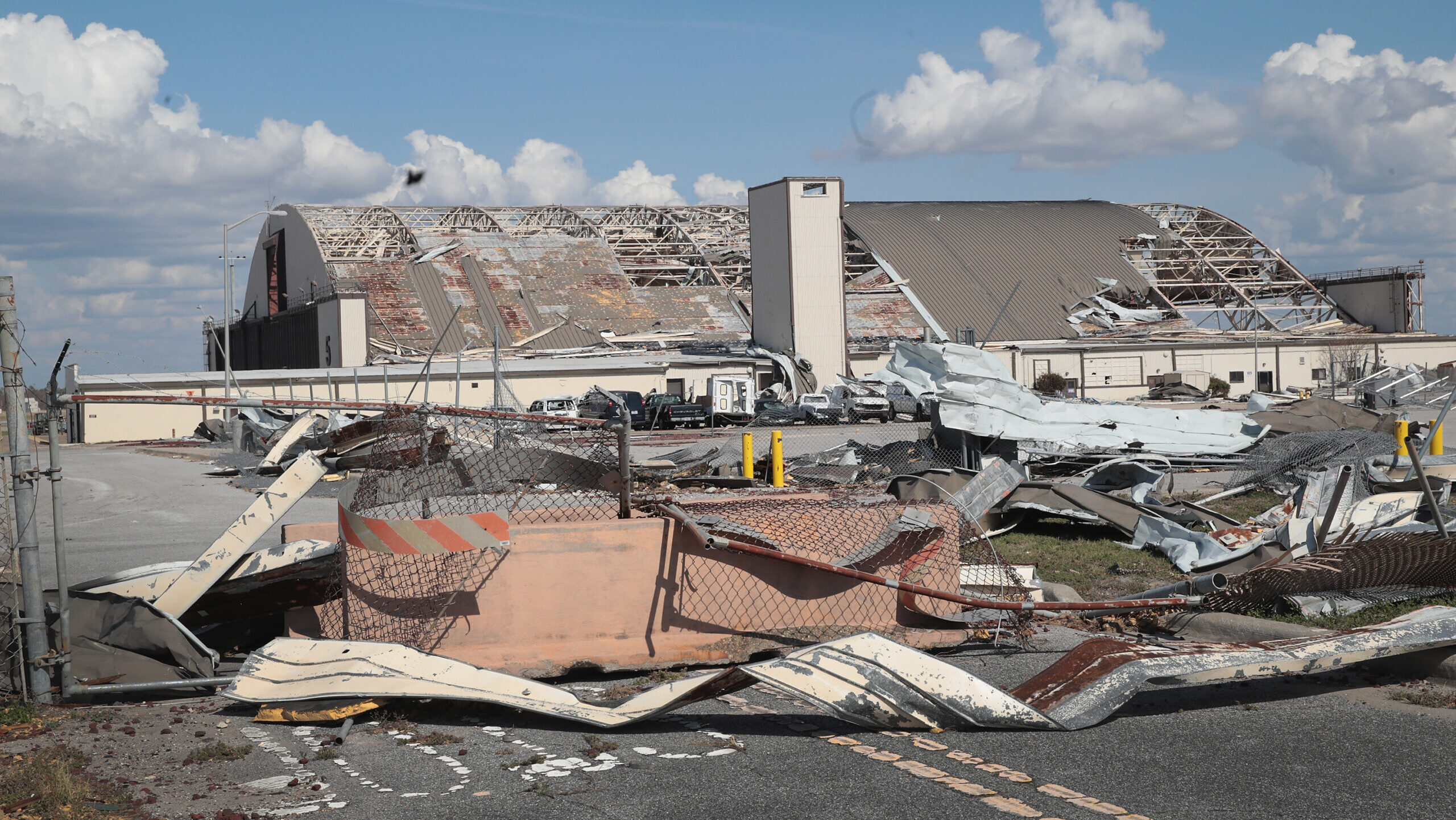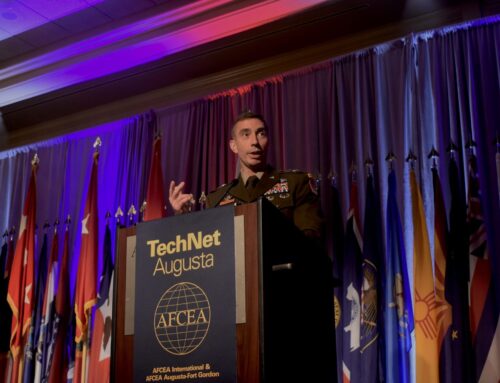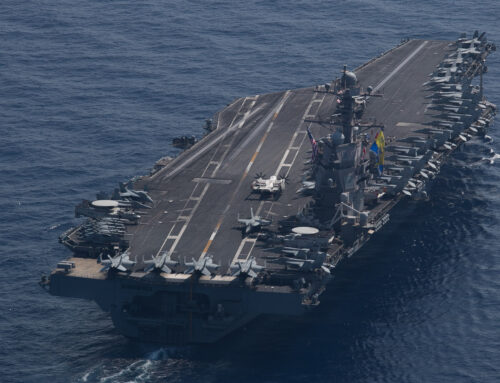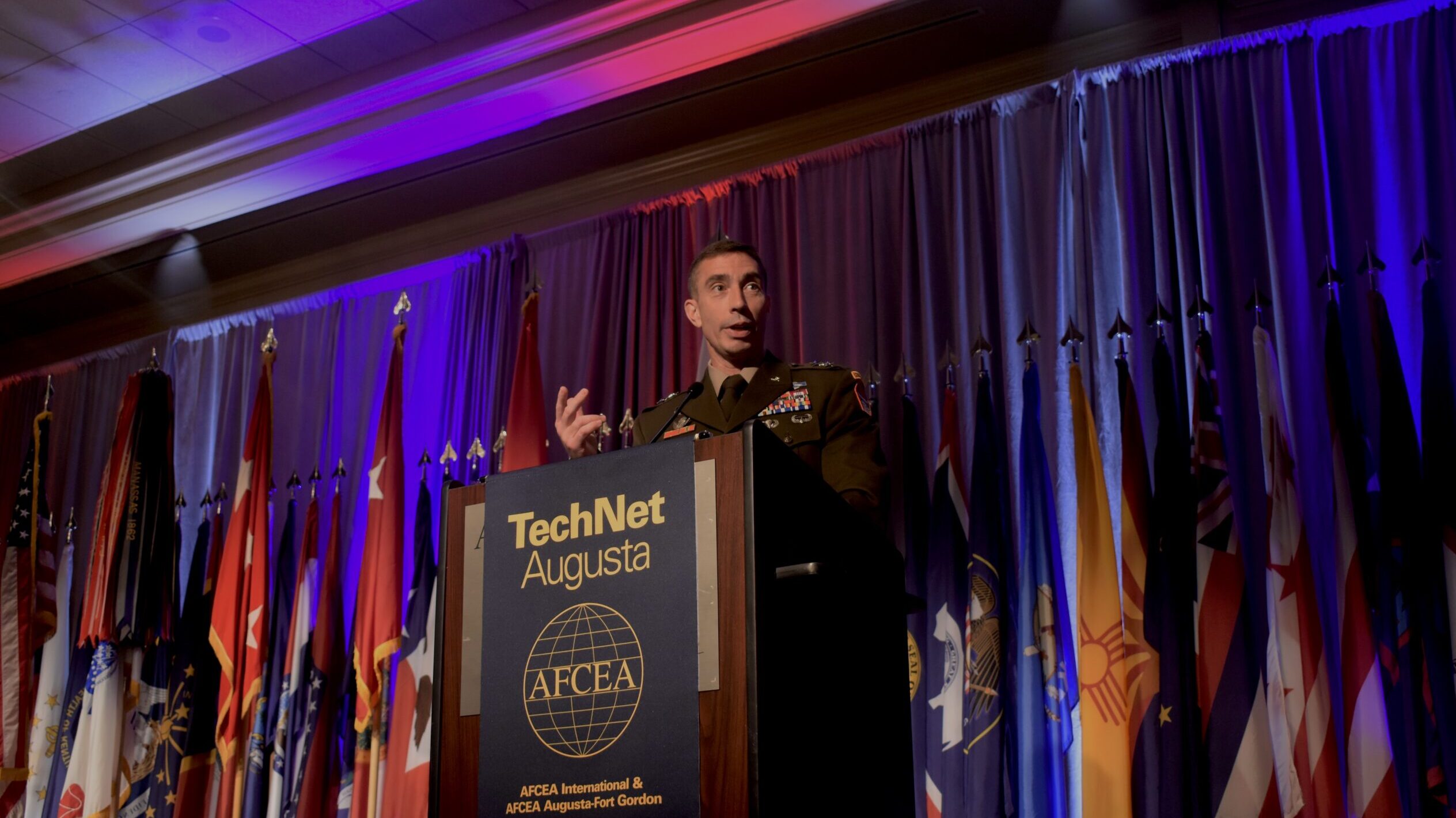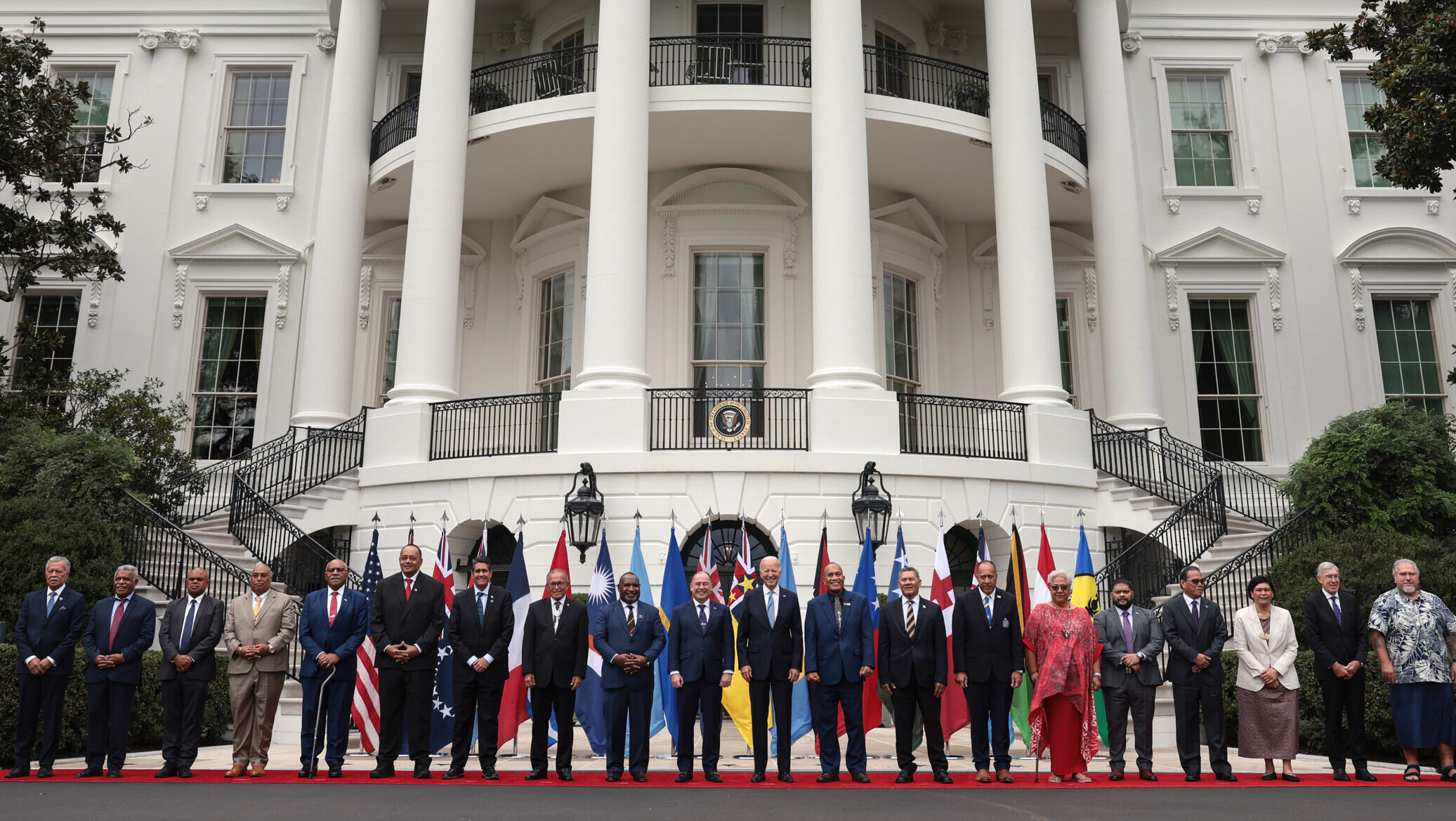Debris litters Tyndall Air Force Base following Hurricane Michael on October 17, 2018 in Panama City, Florida. the base experienced extensive damage from the storm. Hurricane Michael slammed into the Florida Panhandle on October 10, as a category 4 storm causing massive damage and claiming nearly 30 lives. (Photo by Scott Olson/Getty Images)
After China became the focus of American defense in the 2018 and 2022 National Defense Strategies, the Pentagon got busy preparing its forces by breaking down the so-called “China challenge” into smaller, manageable pieces.
Professional military education (PME) scoped learning outcomes for intermediate and senior schools, while services created standalone courses and ensured training regimens factored in Chinese tactics. It might not have been easy to do, but the rationale behind the effort was clear: A “one size fits all” approach to complex threats provides inadequate preparation. When the Pentagon said that the military needed to be able to counter China, it was understood that individual servicemembers’ missions, functions, and roles would guide what they needed to know and do in order to execute that mission.
Lessons from that approach now need to be applied towards building the military’s understanding of another existential threat: climate change.
A threat so systemic may seem too difficult to disaggregate, but, as with competition with China, there are clear ways to break the issue down and tackle it — despite entirely misguided assertions from some quarters that climate change distracts from the “real” military mission and leapfrogs higher priorities. Through keeping a focus on what it takes to execute that mission, it’s possible to empower our forces to tackle multiple threats at the same time.
I ran the Pentagon’s Office of Force Education and Training for three years, during which time we deepened mission-critical knowledge of China and climate change simultaneously. One did not come at the expense of the other — on the contrary, an understanding of climate realities enhanced the ability to plan for a China scenario. The approach wasn’t about turning on a firehose of climate change information at the expense of other topics. Rather, it was about answering the five Ws: Who needs to know what information when to do which job, and why.
Large and complex as it may be, the military’s mission is extremely narrow: Preserve US national interests and security through the threat or use of overwhelming lethal force against any enemy, anywhere, any time. Each job and career path in the military ultimately contributes to that mission. So the question then naturally follows: How does climate change complicate that specific job and that specific career path? The answers to that question are what needs to be taught.
For example, to effectively prepare for potential aggression from China, a surface warfare officer needs to understand the order of battle for the Chinese navy and how a Luyang III-class works. She also needs to understand what can affect the accuracy of her ship’s sonar. Ocean salinity is one cause, and salt levels are changing globally as the climate warms. Knowing how to account for that makes her more effective at her job.
Or, to pick a ripped-from-the-headlines example, the installation commander of Tyndall Air Force Base needs to understand the impact of increasingly more intense hurricane seasons on his base so he can make climate-informed decisions when preparing and rebuilding. If he is expected to be able to flow forces forward for a China conflict, he needs to understand if his base is going to be unusable for stretches of time each fall and plan accordingly.
Integrating climate change into overall preparations, while keeping the focus on the essential knowledge required to execute the mission, is a question of scope. Of course it can be complicated. So is modern warfare. But it can and must be done. And here are five proposals for how to do it well.
First, make action, not knowledge, the purpose behind any dissemination of climate change information. Military education and training prepares those who wear the uniform to do something; it’s not a consciousness-raising regimen. Service members across the joint force today are facing operational challenges made worse — or in some cases created — by climate change, from nuclear-powered aircraft carriers unable to cool their equipment and reactors with hot seawater, to soldiers sickening and dying from the heat, to fighting wildfires instead of human adversaries. Information on climate change needs to help people know how to execute the mission, no matter the type or source of the obstacle.
Second, tailor that information wisely: Dispense with the misperception that everyone in uniform needs a deep understanding of why the climate is changing. Beyond units like the 14th Weather Squadron that are trained climatologists and oceanographers, fluency in the details of anthropogenic change is not mission-essential knowledge. Moreover, delivering that information competes for time that is already overtaxed by the ballooning number of Common Military Training modules. Dispense too with the misperception that everyone in uniform needs to know the same thing about climate change. A Foreign Area Officer in Japan and one in Germany need to appreciate different climate effects; so too a missileer versus an installation commander versus a sub driver.
Third, resist the temptation to “set it and forget it” in professional military education (PME). Use PME and its subset, Joint PME, for what they are best suited for: an early foundation-builder for new officers and a cognitive chiropractor as they rise in the ranks. PME teaches leaders how to think by introducing students to complex issues, such as how to account for the effects of climate change in military strategy and operations (like factoring in warmer oceans when planning carrier deployments). However, PME only reaches a small portion of the total force at set touch points throughout a career, and it only sets the stage for the problems future leaders will face. A static dispensary of information is not an on-demand problem solver — and the problems today’s servicemembers will face are dynamic and fluid.
Fourth, support the growth of and access to places that provide answers for dynamic and fluid problems, like the DoD Climate Resilience Portal. Such a website helps provide the sorting function for what a vast and complex military needs to know to achieve the mission in a climate-informed way.
Finally, ensure that the places created to provide job-specific training include climate realism. A tank driver attempting to navigate a washed-out bridge with a 68-ton Abrams should be able to rely on the preparation she got at Ft. Moore. Build muscle memory early for the likely scenarios servicemembers will face over their careers.
The US military is not only the greatest fighting force the world has ever seen, but also a world-class risk mitigation organization. Integrating climate information into how they perform their jobs only makes them better at them.
Service and DoD leadership should deliver practical, climate-informed education and training that helps them know what to do. Then they can get after solving any problem.
Caroline Baxter is a Senior Advisor at the Center for Climate and Security. From 2021 to 2024, she served as Deputy Assistant Secretary of Defense for Force Education and Training working as the principal senior authority on the development of DoD policy on all issues relating to military education, training, and exercises across the Joint Force. She also led DoD’s Climate Literacy Sub-Working Group (CLSWG) that devised a methodology to baseline and grow mission-centric knowledge of climate change through tailoring information to job functions and roles. For her work in DoD, Ms. Baxter was awarded the Department of Defense Medal for Distinguished Public Service.


